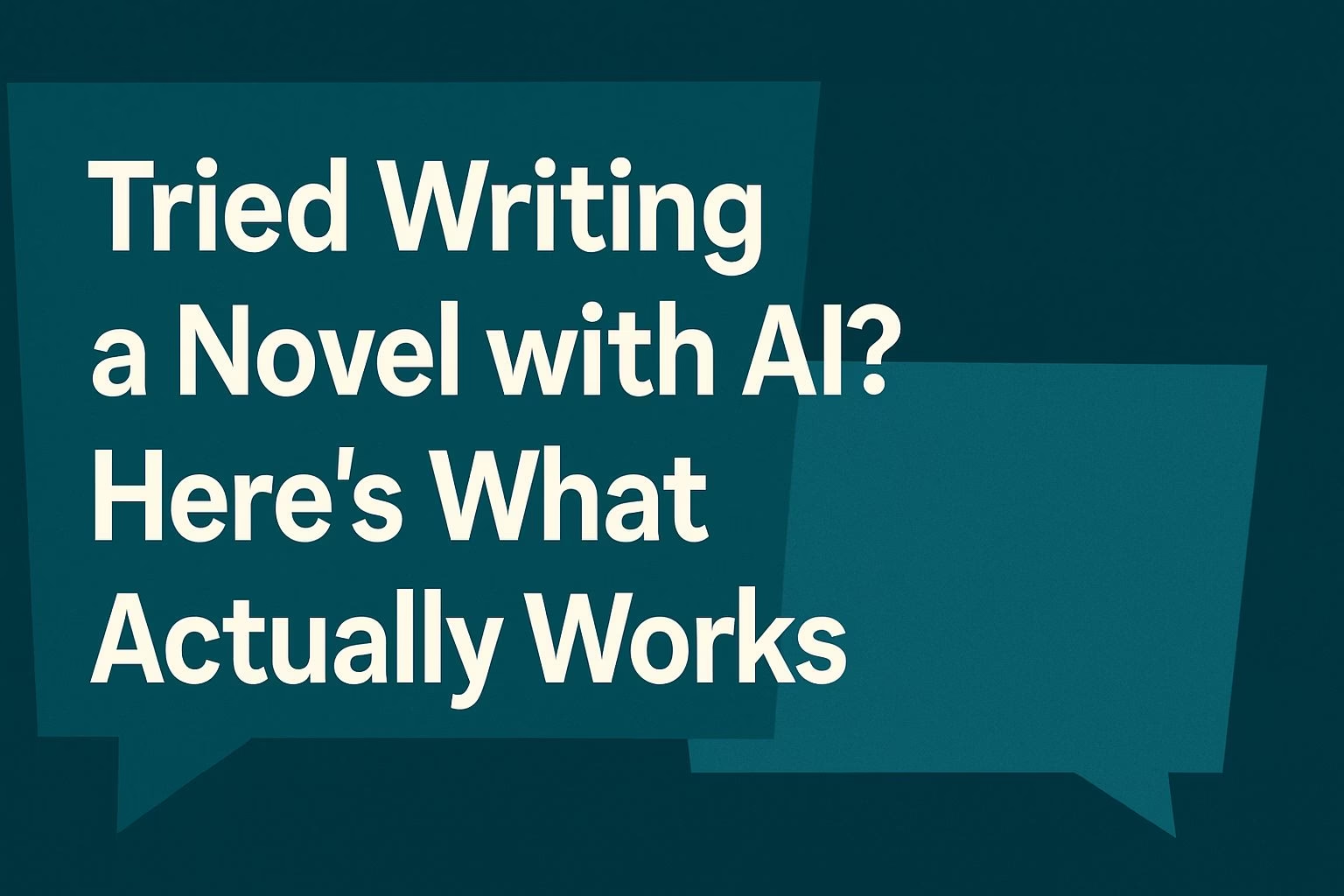Tried Writing a Novel with AI? Here’s What Actually Works
A lot of people think AI can write an entire novel if you just feed it your ideas.
That’s not how it works.
You can tell it the plot, the characters, even the tone you want, but what you’ll get back is often a mess that needs serious rewriting.
We’ve seen writers try Claude, ChatGPT, and other tools, hoping to avoid editing. Most end up frustrated. The tech is good at drafting, outlining, and helping you keep momentum.
But if you want anything close to publishable, you’ll still need to do the heavy lifting.
Some tools are better than others, especially for writers who enjoy guiding the process. And if you’re the type who just wants to minimize grunt work while staying in control of the story, a few smart tools can actually help.
Why AI Struggles with Full Novel Generation
AI can generate scenes, dialogue, and even entire chapters. But consistency, style, and coherence across an entire novel are another story.
Tools like Claude and GPT-4 can hold short-term context well, but they start to lose track of things as the story grows.
Writers who’ve tried feeding chapter-by-chapter breakdowns into Claude or GPT have run into a recurring issue: the AI forgets.
It might use the wrong version of a character, introduce plot holes, or shift tone halfway through a scene. You could write detailed prompts or use memory systems, but the moment you push the AI to think long-term, it breaks down.
Some users try solving this with workflows: generate a scene, then feed it back to the AI for rewriting.
Others build codexes or custom instructions that the AI can reference while writing. These methods help, but they don’t remove the need for manual oversight.
You’ll still have to catch inconsistencies, rewrite flat dialogue, and make sure the pacing works.
The dream of typing an idea and watching a finished novel come out is far from reality. But if you’re willing to guide the AI, you can get a rough draft that saves time, just not a polished one.
The Best Way to Use AI in the Writing Process
If your goal is to cut down on friction and get momentum, AI can be a great assistant. Don’t expect it to be your co-author. Think of it more like a brainstorming partner, a line editor, or a first-draft machine.
Start with your own outline. Break your novel into small parts, chapter summaries, character arcs, and specific plot beats.
Instead of asking the AI to generate an entire chapter at once, prompt it scene by scene. Give it structure, goals, and emotional tone. Then, after each scene is generated, feed it back in and ask the AI to rewrite it with tighter prose, better pacing, or more vivid detail.
You’ll likely still need to edit. But the process becomes more efficient.
What used to take an hour might now take 20 minutes. This can help you beat writer’s block and finish drafts faster without burning out.
For some writers, AI tools like Sudowrite or NovelAI work best when used like this. They’re not magic wands, but they’re excellent for refining ideas and building momentum.
And if you’re writing fiction that leans on style and voice, even a general writing tool like Blaze AI can do more than you’d expect, especially when it comes to generating character-driven dialogue or rewriting clunky passages.
What AI Still Can’t Do for Novelists
No matter how advanced the tool is, AI still falls short in the most critical areas of storytelling.
It doesn’t understand your characters the way you do. It doesn’t have a sense of emotional timing or the subtle shifts that make a plot satisfying.
It can’t create truly original voices or layer meaning over multiple scenes with intention.
Writers hoping to bypass editing often find themselves spending just as much time fixing awkward phrasing, inconsistent tone, or lifeless dialogue.
In fact, many end up with drafts that feel more like stitched-together summaries than real scenes. You may find that the more you rely on AI, the more generic your novel becomes.
Editing is where the human eye makes the biggest impact. Whether it’s tightening a sentence, fixing plot holes, or fine-tuning the flow of dialogue, that level of precision still requires real authorship.
Even with tools that claim to “humanize” AI-generated text, the final polish has to come from you.
The goal should not be automation. It should be acceleration. Use AI to get moving faster, but expect to take the wheel when it matters most.
Tips from Writers Who’ve Tried It
Writers in the same boat have already tested the limits. Many have shared their exact setups, including what works and what doesn’t.
Based on those experiences, here are a few things worth trying:
-
Scene-by-scene prompting works better than asking for full chapters. The AI performs more reliably when it doesn’t have to juggle too many elements at once.
-
Store key details in a persistent reference file. Character bios, settings, timelines, and tone samples can be pasted in at the start of each session.
-
Use AI for second drafts. Once you get a rough version down, paste it back in and ask for rewrites. Focus on pacing, style, or tone.
-
Edit in layers. First for plot, then for dialogue, then for line-level polish. Trying to fix everything at once is overwhelming, whether it’s AI-written or not.
-
Mix tools where it helps. Some writers use Claude for drafting, then switch to other tools like Blaze AI or Walter Writes to improve clarity or rhythm.
You’ll save time, but you won’t escape the work. And that’s okay.
The writers who benefit the most are the ones who treat AI like a creative partner, not a shortcut.
If You’re Still Hoping for a One-Click Novel Generator
The idea of pressing a button and watching a full novel appear sounds incredible. But that kind of tool doesn’t exist, at least not if you care about quality.
What’s available today are assistants, not authors. Tools that help you move faster, brainstorm better, and get unstuck when the words won’t come.
For writers who want to skip the hard parts entirely, AI will disappoint. But if your goal is to reduce friction, get rough drafts on the page, and stay focused without losing your voice, there’s real value in using the right setup.
The better your input, the better the AI’s output. And with the right structure, you can save dozens of hours across the life of a novel.
Just don’t expect perfection. Expect progress. Use AI to support your creativity, not replace it.

